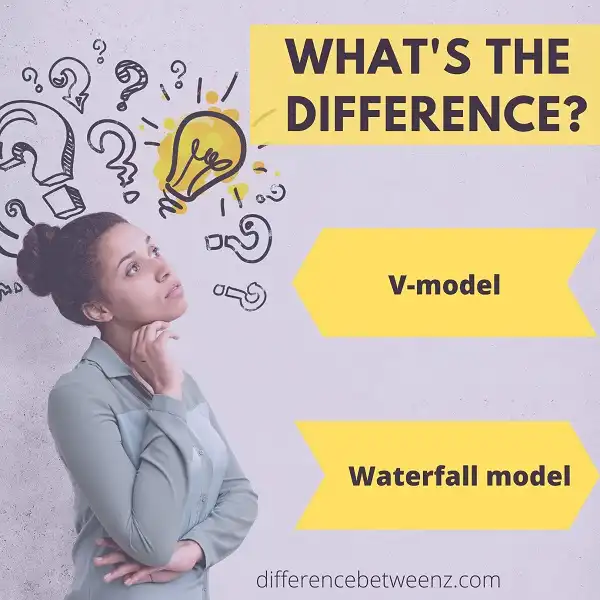Have you ever wondered what the difference is between the V-model and the Waterfall model? Both models are used for software development, but they have different purposes. In this blog post, we’ll take a closer look at the differences between these two models. We’ll also discuss when it’s best to use each one. So, let’s get started!
What is V-model?
- The V-model is a software development process that follows a specific sequence of steps. It is represented as a V shape, with each point on the V representing a stage in the development process. These stages include requirements, design, implementation, verification, and maintenance.
- Each stage includes testing to ensure that the product meets specified requirements and functions properly before moving on to the next stage. This approach helps prevent errors and reduces rework in later stages of development.
- Overall, the V-model emphasizes early planning and thorough testing throughout the software development process. However, it can also be inflexible and may not work well for projects with rapidly changing requirements.
What is the Waterfall model?
- The Waterfall model is a linear approach to software development, where each phase must be completed fully before moving on to the next. This method was originally used in manufacturing and construction industries before being adapted for software development in the 1970s.
- In the Waterfall model, phases typically include planning, requirements analysis, design, coding, testing, and maintenance. Each phase has specific deliverables and review processes before moving on to the next stage.
- One advantage of Waterfall is that it allows for clear communication and documentation as each phase has well-defined goals and deliverables. However, it can also be inflexible as changes may not easily be incorporated during later stages of development.
Difference between V-model and Waterfall model
The V-model and Waterfall model are both software development methodologies, but they have distinct differences in their approach. The V-model follows a sequential path, where each stage of the project is dependent on the completion of the previous step. It also integrates testing at every phase, with corresponding test plans and results to ensure quality assurance throughout the project timeline.
On the other hand, the Waterfall model follows a linear process, where tasks are completed one after another in a predetermined order. Testing is only conducted at the end of the project, rather than being integrated into each phase. Another key difference is that the V-model allows for revisions and feedback to be incorporated throughout the project timeline,
Conclusion
SSO and LDAP are both authentication protocols that allow users to log in to a system with one set of credentials. However, they differ in a few ways. SSO is typically used by enterprises to provide single sign-on for their employees, while LDAP is more commonly used by organizations that need to manage large numbers of user accounts. Additionally, SSO is often implemented using software tokens or cookies, whereas LDAP relies on directory services.


